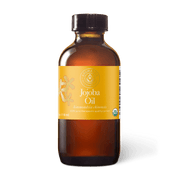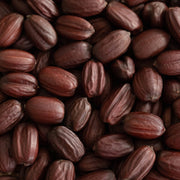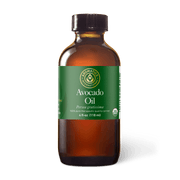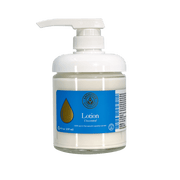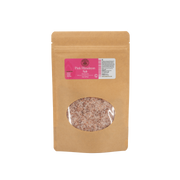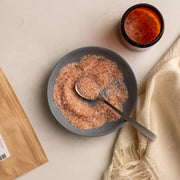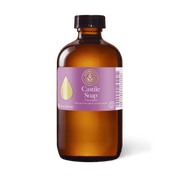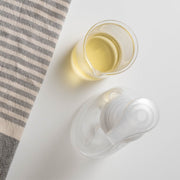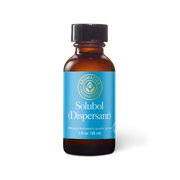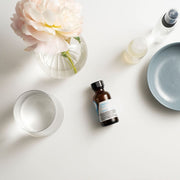Essential oils are incredibly potent plant essences. It can take hundreds of pounds of plant material to create a single bottle of essential oil! There are many uses where diluting essential oils is vitally important. Using undiluted essential oils on the skin, for example, can cause skin irritation or even skin allergies on particularly sensitive skin. Some essential oil's scents may be overwhelming as well, so it is important to not only know how to dilute essential oils, but also when to.
Below we’ve summarized essential oil dilution guidelines for common essential oil uses, as well as extra precautions to take with children and pregnant or lactating women.
What does it mean to dilute essential oils?

Diluting essential oils refers to the process of mixing them with a carrier oil or other substances to reduce their concentration before use. Essential oils are highly concentrated plant extracts that contain volatile compounds with potent properties. While they offer numerous benefits, such as aromatherapy and natural remedies, they should be handled with care due to their strong effects. Dilution is essential for several reasons.
First, it helps ensure safety and minimizes the risk of adverse reactions. Undiluted essential oils can cause skin irritation, allergic reactions, or even burns. Dilution provides a gentler and safer application method.
Second, diluting essential oils allows for proper dispersion and absorption on the skin. Carrier oils act as a medium, aiding in the even distribution of essential oils and preventing evaporation. This enhances the effectiveness of the essential oil and maximizes its benefits.
Lastly, dilution indirectly extends the use potential of your oils, as using them sparingly allows for a more sustainable approach. Diluting essential oils promotes safety, enhances efficacy, and supports sustainable usage, making it a crucial practice for anyone incorporating these powerful extracts into their daily routines.
What is the correct essential oil dilution?

Recommended essential oil dilution ratios depend on the specific situation and use, as described in the essential oil dilution chart below. It is also important to consider the strength of the specific essential oil you are using, for example several drops of lavender essential oil can be used to every one drop of rose. Carrier oils (vegetable-based oils like jojoba oil or avocado oil or unscented lotion) should be used as a base when applying essential oils to skin.

Using essential oils on your skin

Diluting essential oils in a carrier oil varies based on the carrier and essential oil types, its intended use, and individual sensitivity. General dilution guidelines are:
Adults: Usually, a 2-3% dilution is suitable, about 12-18 drops of essential oil per ounce of carrier oil.
Children (5-10), Frail Elderly, Sensitive Skin: A lower dilution of 1% or less (6 drops per ounce) is suggested for these demographics.
Facial or Sensitive Areas: Use a 0.5-1% dilution (3-6 drops per ounce).
Acute or Short-Term Use: For resolving a specific issue, a marginally higher dilution can be used for a period of 2-3 weeks as necessary.
Before broader application, perform a patch test to confirm individual tolerance. If further assistance is required, feel free to reach out to a qualified or certified aromatherapist. Essential oils, due to their high potency, should always be handled with caution.
Using essential oils in a bath

Essential oils can be added to a bath when combined with salts, milk, and a carrier oil like jojoba oil.
Salts
- 5-6 total drops of essential oils + 2 ounces of Pink Himalayan salt + 1 Tbsp of Castile soap or your favorite carrier oil such as jojoba oil.
- Mix well until blended before adding the mixture to your bath.
Milk
- 3-4 total drops of essential oil + 1 cup organic whole milk or cream + 1Tbsp carrier oil such as jojoba
- Mix well and add the mixture to your bath.
Carrier Oils
- 3-4 total drops of essential oil + 1 Tbsp carrier oil (We recommend jojoba oil).
- Mix well and add the mixture to your bath.
Using essential oils in a spray
- In an empty 2 fl oz PET bottle with spray cap, add 10-15 drops of essential oil + 4 drops of Solubol (Dispersant) for every drop of essential oil. Next, add water or hydrosol to fill the bottle, cap the bottle and shake gently to disperse the essential oils into the water or hydrosol.
- Spray freely in any room or on linens.
Note: We recommend a 4:1 ratio of Solubol to essential oil. This means adding 4 drops of Solubol for every drop of essential oil in your blend. This will help ensure consistent dispersion of the EOs into the water-based portion of your essential oil blends.
Using essential oils in a steam

- 1 drop of essential oil or 1 drop of an essential oil blend + one bowl of steamy water.
- Make sure that the water is just steaming, not boiling. CLOSE YOUR EYES and lean over the bowl to breathe in the oil. You can create a tent to hold the steam by tucking a towel around your head and the bowl. If it feels too hot, give the water more time to cool.
Using essential oils in an inhaler
For Adults
- 15-18 drops of essential oil + a cotton inhaler wick
For Children Over 5
- 4-5 drops of essential oil + a cotton inhaler wick
Using essential oils for children over 5 and pregnant or lactating women
Essential oils are very helpful for children as well as pregnant or lactating mothers, however, the safety information for each essential oil blend or essential oil should be carefully reviewed. It is especially important to dilute essential oils when creating a blend that will interact with these groups We include safety information on all of our product pages. We also recommend reviewing our simple guidelines for using essential oils with pregnant or lactating women by reading our blog, Essential oils & pregnancy: What you need to know.






